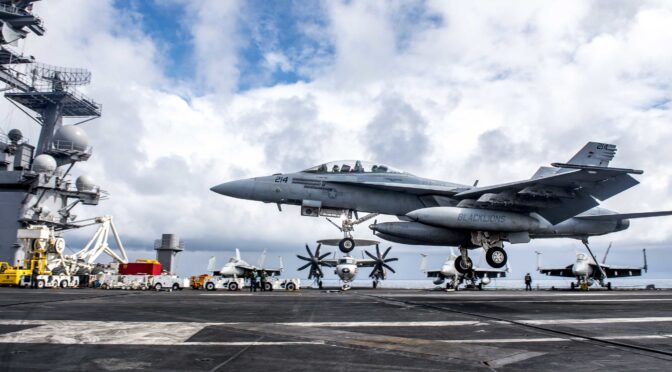By Barney Rubel
Management, defined as the effective use of resources, is a process and skill that permeates the preparation and execution of warfighting. Commanders can prioritize several specific areas to improve their warfighting management.
Time management is essential. As the CO of a strike fighter squadron, I practiced time management in terms of how much flight time I devoted to different mission areas. There were a limited number of flight hours available during the turnaround cycle based on budgets and the cost of fuel. A Hornet outfit had to be competent in both air-to-air and air-to-ground operations, and these skills were perishable. Of course, there was also carrier qualification, instrument qualification, and other areas that placed demands on time. As CO I had to balance all of these in the context of the individual capabilities, limitations, and idiosyncrasies of my pilots, and with due regard for safety. The goal was to produce a combat ready squadron by the time our carrier sailed on cruise.
In a real sense, all of this was an exercise in risk management. There was never enough time both in terms of actual calendar days and flight hours to bring everyone up to the highest level of capability. I had to decide where to take risks in mission area competency and make calculated tradeoffs. This usually resulted in a “damned if you do, damned if you don’t” situation down the line somewhere, but this is inherent to risk management in warfighting. This whole process works better if commanders go into it with a plan based on either direct operational experience, or at least a rational theory of how the unit will be expected to fight.
Naval aviation took decades to get risk management right with respect to mishaps. Prior to the late 1980s, mishap rates were brutal. In 1954 for example, the Navy and Marine Corps suffered 776 Class A mishaps, losing 535 personnel. When I transitioned from the A-7 world to the F-18 world I discovered “operational risk management.” The strike fighter community balanced risk and reward in terms of warfighting readiness at the type level, resulting in a more conservative approach to day-to-day operations. This did not mean that aggressiveness was sacrificed. It just meant that the criterion for accepting risk was grounded in preserving aircraft and crew for warfighting. The big lesson learned was the need to establish the right criterion for judgment in the management of risk. In my A-7 days the criterion was meeting the flight schedule at almost all costs. In my F-18 tour, it was preserving warfighting capability until needed.
We used to disparage management and extol leadership. After decades of naval aviation service, I learned that effective leadership at all levels requires competent management. Poor management increases what Carl von Clausewitz calls friction, which can take the form of dissipating effort down unproductive avenues, and by being forced to recover from messes caused by bad management in the midst of combat. Effective warfighting management will ultimately help minimize the friction experienced in war.
Robert C. Rubel is a retired Navy captain and professor emeritus of the Naval War College. He served on active duty in the Navy as a light attack/strike fighter aviator. At the Naval War College he served in various positions, including planning and decision-making instructor, joint education adviser, chairman of the Wargaming Department, and dean of the Center for Naval Warfare Studies. On occasion he served as a special adviser to the 31st Chief of Naval Operations. He has published over thirty journal articles and several book chapters.
Featured Image: ATLANTIC OCEAN (Aug. 4, 2017) An F/A-18F Super Hornet, attached to the “Blacklions” of Strike Fighter Squadron (VFA) 213 and carrying U.K. Carrier Strike Group Commander Cdre. (U.S. Navy photo by Mass Communication Specialist 2nd Class Hank Gettys/Released)


It would be an interesting study to see how much discretionary time exists in a CO’s weekly schedule to exercise his authority to prioritize activities, compared to the past. I would wager given ever increasing administrative burdens and other requirements levied from on high, that the slice of time-pie in which a CO can maneuver and take calculated risks has become very small.